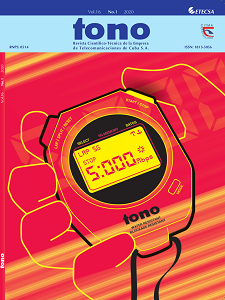Wireless sensor network design for environmental in the San Miguel de Parada wildlife refuge
Keywords:
Wireless, Sensor network, Raspberry Pi, TIC and environment monitoring, LoRaAbstract
This article presents the design of a wireless sensor network for environmental monitoring in the San Miguel de Parada Wildlife Refuge. The proposed network allows monitoring the parameters used in climate change studies such as temperature, relative humidity and average sea level. The location of the nodes responds to the needs of the project. It was necessary to design a communication node for high precision data acquisition equipment to be used in the wildlife refuge. Calculation of the radio links takes into account the loss of propagation by the mangrove vegetation. LoRaWAN technology in 433 MHz has an excellent performance in monitoring a forested area with a wireless sensor network.

